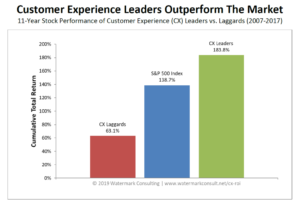According to research by Google, 90% of multiple device owners switch between screens to complete tasks, using an average of three different combinations every day. In an increasingly fast-paced world, with multiple demands on our time and attention, this means that the path to making a purchase or completing a task can start or end at any time, in any location on any device.
Here we look at why customers might be moving between channels, and how companies can ensure touchpoints are smooth. We also explore why omnichannel is a win-win for both customers and your bottom line.
Understanding why customers move between channels
We know that customers switch between devices and channels, but understanding some of the drivers behind those moves can give an insight in their needs and wishes, and help companies design streamlined transitions to enhance, rather than interrupt the customer experience.
Here are just some of the reasons why customers might use different channels:
- A task is more suited to another channel, e.g. a customer starts out expressing interest in your product or service via online chat, but the explanations start to get complex and typing in a small window becomes laborious. Instead they might prefer to continue the discussion over the phone, ideally not having to start from scratch with re-explaining what was already discussed via the chat.
- The activity makes it impossible to continue on the same channel, e.g. a customer starts out watching videos on how to repair their blocked sink on their desktop computer, but needs to switch to a mobile device to be able to watch the video tutorial they select when they are actually performing the task.
- The task is interrupted or needs to be completed at another time in another context, e.g. a customer researches a new mobile phone subscription via a mobile operator’s website on their desktop computer during their lunchbreak at work, and wants to complete the purchase on their mobile device on the train journey home.
Because customer journeys tend to be non-linear, and consist of a series of touchpoints or handoffs between channels that can differ considerably by customer type, companies need an in-depth understanding of what their customers want to be able to develop an effective strategy.
Customer personas and data about behaviour and preferences can provide valuable insights into what customers truly want, and with this, companies can start to piece together the service journeys their customers may take, including the transitions between channels.
If we think about something like booking and taking a flight, the service journey can involve many transitions, and some airlines manage to provide an almost perfect experience. For example: booking your flight via a browser on your PC, choosing between checking in from home via an app on your phone and storing the boarding pass as a QR code or checking in at a desk at the airport, printing your baggage ticket at the airport by scanning the QR code at a kiosk, etc.
Companies who perfect the omnichannel experience acknowledge that not all customers will follow the same steps to complete a task, and ensure that users with different preferences can craft an experience that suits their needs.
Win-win: benefits for customers and opportunities for companies
Putting the customer at the heart of your strategy may sound like a nice idea, but it is really worth it? Does it really bring bottom-line results for companies? In a nutshell, absolutely!
Companies that successfully implement a customer experience strategy achieve higher customer satisfaction rates, reduced customer churn and increased revenues.
In the graph below, you can see what a great customer experience can be worth. By studying the cumulative total stock returns for two model portfolios, Watermark Consulting shows that customer experience leaders clearly outperform the market, compared to customer experience laggards who have not put customer experience at the heart of their business model.

Research by marketing automation platform Omnisend shows that companies who create a more omnichannel experience earn a 90% higher customer retention rate than single-channel marketers.
And those customers weren’t just more loyal, they were also more engaged and purchased more – in their 2019 study, companies using three or more channels in their campaigns earned an 18.96% engagement rate on average, compared to single-channel marketers who earned only 5.4% (meaning 250% more engagement from omnichannel campaigns).
And with that increased engagement came increased spending: in an omnichannel experience, customers are likely to spend 13% more than those who experienced just one channel.
With obvious benefits for customers and bottom-line benefits for companies, developing an omnichannel strategy is not only a good idea, but essential: in a world where customers expect experiences that are close to perfect, relying on one channel or several disjointed channels is likely to see potential customers looking elsewhere for a unified experience.
That’s it! Hungry for more? Discover more tips in our omnichannel guide.


